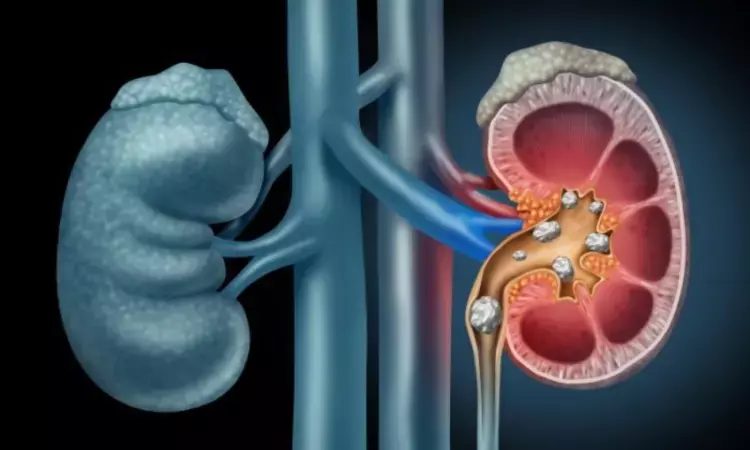- Home
- Medical news & Guidelines
- Anesthesiology
- Cardiology and CTVS
- Critical Care
- Dentistry
- Dermatology
- Diabetes and Endocrinology
- ENT
- Gastroenterology
- Medicine
- Nephrology
- Neurology
- Obstretics-Gynaecology
- Oncology
- Ophthalmology
- Orthopaedics
- Pediatrics-Neonatology
- Psychiatry
- Pulmonology
- Radiology
- Surgery
- Urology
- Laboratory Medicine
- Diet
- Nursing
- Paramedical
- Physiotherapy
- Health news
- Fact Check
- Bone Health Fact Check
- Brain Health Fact Check
- Cancer Related Fact Check
- Child Care Fact Check
- Dental and oral health fact check
- Diabetes and metabolic health fact check
- Diet and Nutrition Fact Check
- Eye and ENT Care Fact Check
- Fitness fact check
- Gut health fact check
- Heart health fact check
- Kidney health fact check
- Medical education fact check
- Men's health fact check
- Respiratory fact check
- Skin and hair care fact check
- Vaccine and Immunization fact check
- Women's health fact check
- AYUSH
- State News
- Andaman and Nicobar Islands
- Andhra Pradesh
- Arunachal Pradesh
- Assam
- Bihar
- Chandigarh
- Chattisgarh
- Dadra and Nagar Haveli
- Daman and Diu
- Delhi
- Goa
- Gujarat
- Haryana
- Himachal Pradesh
- Jammu & Kashmir
- Jharkhand
- Karnataka
- Kerala
- Ladakh
- Lakshadweep
- Madhya Pradesh
- Maharashtra
- Manipur
- Meghalaya
- Mizoram
- Nagaland
- Odisha
- Puducherry
- Punjab
- Rajasthan
- Sikkim
- Tamil Nadu
- Telangana
- Tripura
- Uttar Pradesh
- Uttrakhand
- West Bengal
- Medical Education
- Industry
Retrograde intrarenal surgery cost-effective option for managing 1-2 cm renal stones

Management of renal stones has been under research. For 1-2cm renal stones, retrograde intrarenal surgery (RIRS) is most cost-effective, finds a study.
The research is published in the Urology Journal.
Kevin M. Wymer and colleagues from the Department of Urology, Mayo Clinic, Rochester, conducted the recent study to perform a cost-effectiveness evaluation comparing the management options for mid-size (1-2cm) renal stones including percutaneous nephrolithotomy (PCNL), retrograde intrarenal surgery (RIRS), and shockwave lithotripsy (SWL).
The authors created a Markov model to compare cost-effectiveness of percutaneous nephrolithotomy, mini- percutaneous nephrolithotomy, retrograde intrarenal surgery, and shockwave lithotripsy for 1-2cm lower pole (index patient 1) and percutaneous nephrolithotomy, retrograde intrarenal surgery, and shockwave lithotripsy for 1-2 cm non–lower pole (index patient 2) renal stones.
A literature review provided stone free, complication, retreatment, secondary procedure rates, and quality adjusted life years (QALYs). Medicare costs were used. The incremental cost-effectiveness ratio (ICER) was compared with a willingness-to-pay(WTP) threshold. One-way and probabilistic sensitivity analyses were performed.
The study results showed that at 3 years, costs for index patient 1 were $10,290(PCNL), $10,109(mini-PCNL), $5,930(RIRS), and $10,916(SWL). Mini- percutaneous nephrolithotomy resulted in the highest QALYs(2.953) followed by percutaneous nephrolithotomy (2.951), retrograde intrarenal surgery (2.946), and shockwave lithotripsy(2.943).
This translated to retrograde intrarenal surgery being most cost-effective followed by mini- percutaneous nephrolithotomy (ICER $624,075/QALY) and percutaneous nephrolithotomy (ICER $946,464/QALY). Shockwave lithotripsy was dominated with higher costs and lower effectiveness.
For index patient 2, retrograde intrarenal surgery dominated both percutaneous nephrolithotomy and shockwave lithotripsy. For index patient 1: mini- percutaneous nephrolithotomy and percutaneous nephrolithotomy became cost effective if cost ≤$5,940 and ≤$5,390, respectively.
Shockwave lithotripsy became cost-effective with SFR ≥75% or cost ≤$1,236. On probabilistic sensitivity analysis, the most cost-effective strategy was retrograde intrarenal surgery in 97%, mini- percutaneous nephrolithotomy in 2%, percutaneous nephrolithotomy in 1%, and shockwave lithotripsy in 0% of simulations.
As a result, it was concluded that for 1-2cm renal stones, retrograde intrarenal surgery is most cost-effective. However, mini and standard percutaneous nephrolithotomy could become cost-effective at lower costs, particularly for lower pole stones.
For further reference, log in to:
https://doi.org/10.1016/j.urology.2021.06.030
Dr. Nandita Mohan is a practicing pediatric dentist with more than 5 years of clinical work experience. Along with this, she is equally interested in keeping herself up to date about the latest developments in the field of medicine and dentistry which is the driving force for her to be in association with Medical Dialogues. She also has her name attached with many publications; both national and international. She has pursued her BDS from Rajiv Gandhi University of Health Sciences, Bangalore and later went to enter her dream specialty (MDS) in the Department of Pedodontics and Preventive Dentistry from Pt. B.D. Sharma University of Health Sciences. Through all the years of experience, her core interest in learning something new has never stopped. She can be contacted at editorial@medicaldialogues.in. Contact no. 011-43720751
Dr Kamal Kant Kohli-MBBS, DTCD- a chest specialist with more than 30 years of practice and a flair for writing clinical articles, Dr Kamal Kant Kohli joined Medical Dialogues as a Chief Editor of Medical News. Besides writing articles, as an editor, he proofreads and verifies all the medical content published on Medical Dialogues including those coming from journals, studies,medical conferences,guidelines etc. Email: drkohli@medicaldialogues.in. Contact no. 011-43720751


